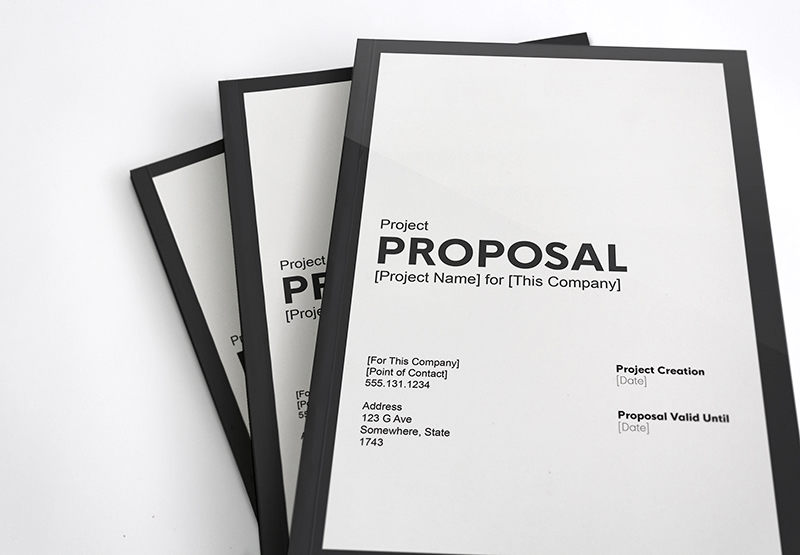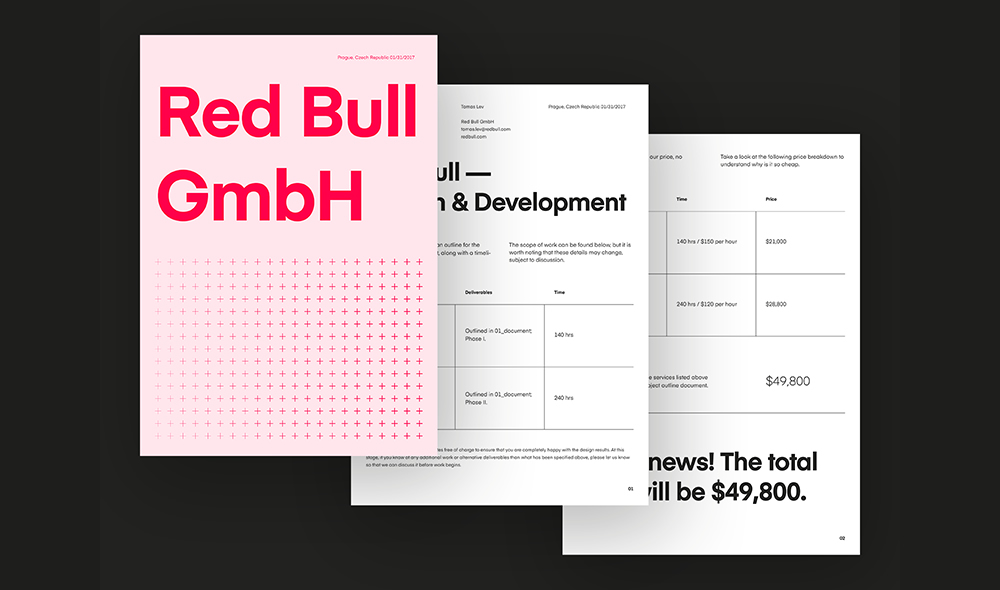Writing Perfect Web Design Proposals
Original Source: http://feedproxy.google.com/~r/1stwebdesigner/~3/52P5Uz2bfvQ/
If you’re a freelancer, then you’ve probably experienced the anxiety of staring at the blank white space where your cover letter or proposal needs to go. Not only do you have to sell yourself, but you have to show that you can do the work, that you understand the client’s needs, that you can fill them in a specific timeframe, and that you’ve specifically tailored your proposal to them.
Before I started being successful at getting freelancing gigs, I made the big mistake of having a generic pitch that I would copy and paste into each cover letter section of Upwork while applying to a bunch of jobs all at once.
The Freelance Designer Toolbox
Unlimited Downloads: 500,000+ Web Templates, Icon Sets, Themes & Design Assets

DOWNLOAD NOW
I hardly got any work because the clients could not only tell that I was just recycling something I’ve used before, but also could tell that I had not fully read their proposal. If you want them to take the time to hire and work with you, then you need to take the time upfront to invest in writing a solid proposal.
Maybe you’ve seen that 20 other people have already applied for the project you’re absolutely sure that you could easily and successfully accomplish.

Proposal Template by Darian Rosebrook
The competition for freelancing gigs is fierce, but at least half of those proposals were generic copy/paste applications, and the others were a sentence or two about how they’re qualified without much more detail.
We’ve compiled a set of tips to help you take the time to craft the perfect proposal that will get you your next freelancing gig. Remember: presentation is everything.
1. Read Through the Proposal and Take Notes
You’ll need to do your research before writing your proposal. Read through the entirety of their posting to determine several things:
What their timeline is
What their budget is (and if it’s even worth your time!)
What product their ultimately asking for
Who their target audience is
What skills they’re requiring or seeking
What previous projects they might want to see
Once you’ve done your due diligence in parsing apart their request, then you can set out to writing a proper proposal. Though we urge you not to use a generic, copy/pasted proposal, it is always a good idea to have a set outline for how to structure your proposals to make writing them faster while simultaneously demonstrating that you understand the needs of the client.
Once you get the job, it might be a good idea to have a standard form like this one you can send the client to show you’re professional and that you care about their input.
2. Create a Standard Form for Applying (But Only a Wireframe)
We recommend something like the following:
I am a(n) [specific word for what they’re looking for, like designer, writer, or developer] with [skills] and with experience in [jobs or projects specifically related to the kind of project they’ve established] which you can view here [provide links to your project]. I also have experience working with/for [their target audience, and what experience you have writing for them, etc.]. I can complete your project in [insert timeframe] for [your price point].
It does not need to look like this, but having a standard form is different from recycling the same proposal insofar as this way you have a quick and handy guide to turn to so you’re not working on a proposal for hours, while also being able to be original and specific in your proposal.
Don’t forget to be specific about your skill-set. Do you have 5 years of experience in graphic design, or did you get your B.A. in Professional Writing? Don’t make them sift through 300 pages of your skills – make it simple, easy to read, yet expansive enough that they see you can handle every component of their job.
Remember that the client has work to do, too. Communicate this to them and make sure you get what you need from them.

Soulmates Proposal by Charlie Isslander
3. Be Original and Specific
You don’t have to spend 40 hours a week writing one proposal, but you do need to spend more than a few seconds crafting something up if you really want the job.
Think about how much time the client spent in crafting their proposal and posting it to find people to help them – you should ideally be spending however much time you imagine they spent on their job posting as you do on your proposal.
Let us first reiterate: do not copy and paste. Yes, it’s an easy way to quickly get your name out there, but clients can see right through that. The worst offense is when you don’t even mention their project or what specifically about their project you could provide value for.
Your client will be able to see through your vague, generic proposal in a few seconds. Sometimes, this is such a problem that clients will request in their proposal for a freelancer to put words like “pineapple” or “unicorn” at the beginning of their proposal before submission to make sure they’ve read and understand everything about the job posting.
Showcase your work! If you don’t have many samples to send in, especially if you’re just getting started, then it would be a good investment of time and energy in developing some mock-ups to provide to a client when they ask. Better yet, don’t wait for them to ask – show them upfront! Get a website to direct your clients to in your proposal.
Redesign a few of your favorite websites, draw up a few logos for fake companies, write a few blog posts about anything – this will largely depend on what you do and what you’re applying for, but make sure you have something to prove you can do the job.
4. Present a Timeline
This is crucial, and is more than just saying that you could finish the job in two weeks. Be as specific as possible by parsing apart their project into smaller tasks and provide a timeline for each. For instance, you could say that research and brainstorming will take three days, with a little time for communication with the client on your ideas and working their feedback into it, and wireframing will take two days, and so on.
The client will appreciate not only that you’ve taken the time to adequately think about your commitments and their needs, but also will appreciate that you understand the complexities and nuances of what they’re asking. It will demonstrate your seriousness about the job, and will help the client better understand what working with you will be like, and what the greater process of the project will look like.
Last Thing
Remember that as a freelancer you’re selling yourself and your services, and you have to see yourself, your work, and what you provide as a business.
Don’t make your proposal five pages long. Keep it short, sweet, succinct, and economic. You want to be as specific and narrow as possible, as well as descriptive as possible when explaining your process and their project, while also being as succinct as possible so that they know quickly and immediately that you’re the right freelancer for the job.
Think about it this way: pick 3 skills, pick 3 recent projects, and break the timeline into at least 3 tasks for your client. Now go forth, and get working!
The biggest takeaway? A little extra time spent on a proposal can bring you much better contracts, meaning fewer jobs with higher payout. You can work less by working better.



Leave a Reply
Want to join the discussion?Feel free to contribute!